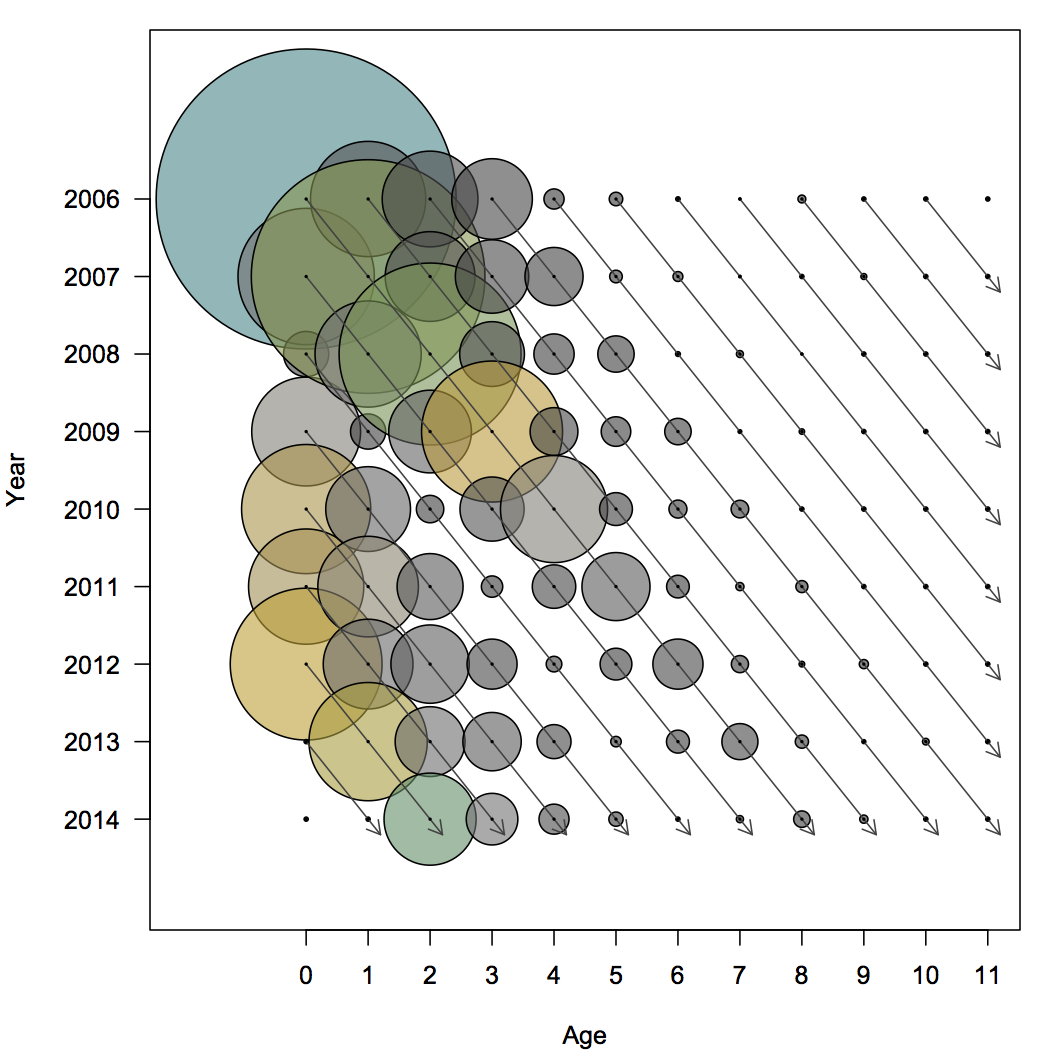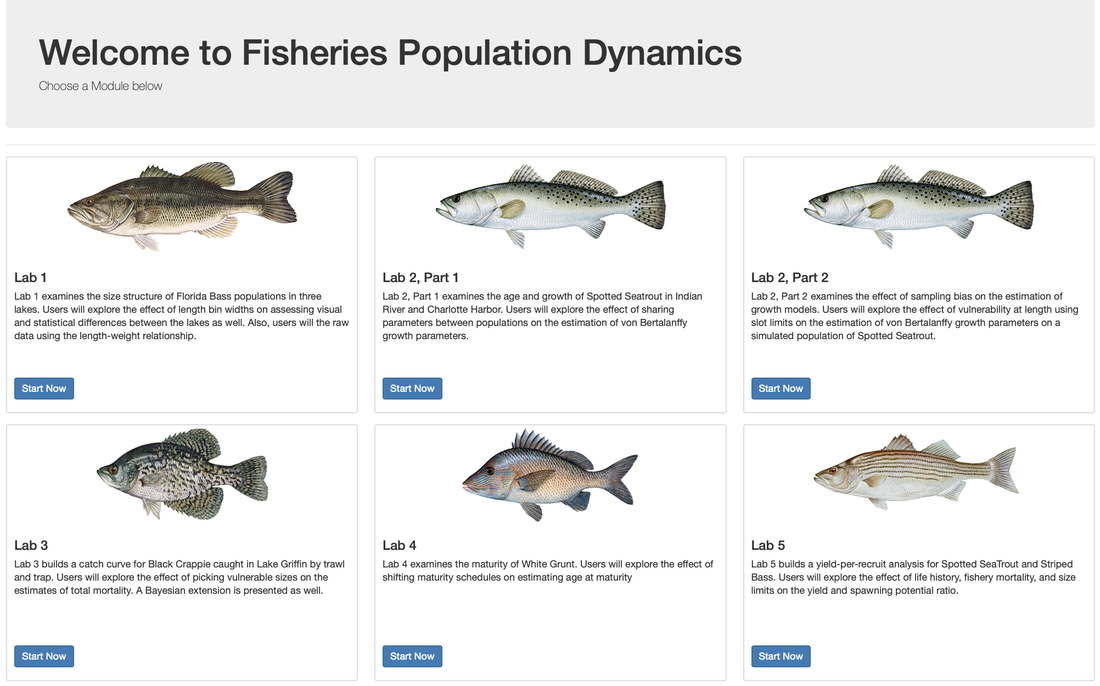Fisheries Population Dynamics
|
FAS 6337C -- This foundational quantitative course is aimed at providing graduate students with analytical abilities to answer research questions on many common fisheries datasets. The class covers growth, maturity, mortality, recruitment, and demonstrates a few of the simpler stock assessment methods. This class features a series of interactive modules to facilitate hands-on exploration of course concepts through simulation. These modules were built with R-Shiny and have helped students beyond the course with power and exploratory analysis in their degrees and professional applications. This online course caters to distance and in-town graduates primarily, though advanced undergraduates can enroll.
I have taught this course since 2020 as the instructor, taking over from Dr. Micheal Allen. I previously took this class as a Ph.D. student in 2013 then co-taught in 2014 and 2017. This class is offered every spring. |
|
Above is an embedded Shiny app that compares the growth of Spotted Seatrout from two populations in Florida. The app runs von Bertalanffy growth models using a maximum likelihood estimation based in R. Users can choose whether to share all, some, or none of the parameters of the growth models between the populations. Each model tested is recorded and the resulting Akaike's Information Criterion is displayed for users to conduct their own model selection after testing various models. In the FAS 6377C course, an app such as this is paired with an assignment to explore the data, build and test models, conduct model selection, and biologically/ecologically interpret the results.
Advanced Quantitative Fisheries Assessment
FAS 6339C — Colloquially known as stock assessment, this course focuses on teaching advanced quantitative techniques covering the range of fisheries assessment and fisheries ecology problems. A key module in this course is building up to fitting a statistical catch-at-age model, a commonly applied fisheries stock assessment method throughout the United States. Students also learn various data processing methods to prepare information for going into assessments, such as catch-per-unit effort standardization.
Students are assigned to groups and work on several group assignments over the course working through various fisheries assessment analyses—CPUE standardization, depletion-based assessments, and integrated assessments. This process is designed to mimic the collaborative, joint nature of developing fisheries stock assessments. The capstone to this process is a mock scientific review panel where students present their work to a panel of fisheries scientists.
This class is offered every other year in the fall.
Students are assigned to groups and work on several group assignments over the course working through various fisheries assessment analyses—CPUE standardization, depletion-based assessments, and integrated assessments. This process is designed to mimic the collaborative, joint nature of developing fisheries stock assessments. The capstone to this process is a mock scientific review panel where students present their work to a panel of fisheries scientists.
This class is offered every other year in the fall.
Seminar in Fisheries and Aquatic Sciences
FAS 4933 — The is a fall and spring seminar course that I co-organize and co-teach with Dr. Gretchen Lescord. This course brings in scientists to speak in-person or over Zoom to the Fisheries and Aquatic Sciences program about their research or projects. We aim to organize a diverse pool of researchers across backgrounds, careers, and research topics. Undergraduates enrolled in this course listen to the seminars, provide a brief writeup, and discuss with each other what they learned.
Proudly powered by Weebly





